Fix An External Hard Drive That's Not Working/Responding/Showing Up
External hard drives are often used to back up important data from our Windows PCs. If the drive should suddenly stop working, it could prove disastrous. But don't worry, we'll explain how to get it working again and save those precious files.
Applies to: Fix external hard drive, USB drive, SD card, internal HDD/SSD, etc., not working or responding error on Windows PC.
Quick Guide - Fix External Hard Drive Not Working/Responding Error in 3 Parts:
| Workable Solutions | Step-by-step Troubleshooting |
|---|---|
| Part 1. Connect Non-Working External Drive | Change USB cable, USB Port > Change PC...Full steps |
| Part 2. Restore Data | Run software > Scan external hard drive...Full steps |
| Part 3. Fix Non-Working External Drive | Method 1. Check Disk Error Method 2. Format External Hard Drive to NTFS Method 3. Create New Volume...Full steps |
The following solutions for fixing problems with external hard drives will work with any brand, including WD Elements, Seagate, SanDisk, Toshiba and others.
Causes of External Hard Drive Not Working/Responding
If your external hard drive suddenly stops working or cannot be recognized by your PC, don't panic. There are many reasons why the drive has become problematic, such as these:
You don't have to buy a new external hard drive and give up all the precious data. First, check the causes that make your external hard drive not working:
- Problematic connection
- RAW, invalid or unsupported file system
- Drive letter conflict or no drive letter
- No partition
- Not initialized
- Outdated disk driver
- USB Root Hub is outdated
- Disk is physically damaged
- ...
No matter the cause, if you follow the tips laid out below you should hopefully get the drive going once more or at least recover your data.
You May Also Be Interested In:
If you are having a similar issue with your PC's hard drive, you can try the fixes below.
How to Fix A Hard Drive That's Not Showing Up in Windows
Are your hard drives, internal or external, not showing up in File Explorer or the Disk Management app on Windows? Follow these tips to make them recognizable to your system again.
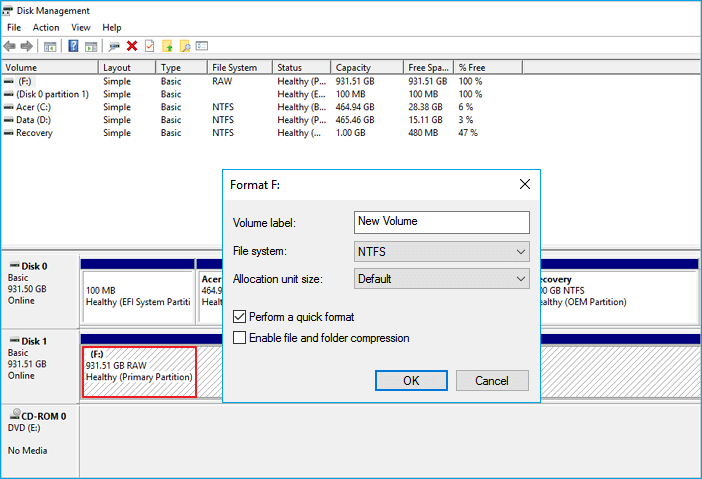
Part 1. Make Non-Working External Hard Drive Detectable
Applies to: Fix an external hard drive not detected due to a connection problem.
If you encounter problems with an external drive suddenly not working or becoming undetectable to your PC, the first thing to check is the physical connection.
#1. Check and Change External Hard Drive Connection Cable
Start off by checking the connecting cable between your drive and PC:
- If the USB connector has become loose in the port, just push it firmly back into place and see if that corrects the problem.
- If the cable is broken or damaged, replace it with a new one and try again. In fact, even if you can't see any obvious damage, it's worth swapping the cable in case there is a problem inside.
#2. Change a USB Port or Connect to a New Computer
If the cable appears fine, then it could be the USB port on your PC that's faulty.
Try plugging the drive into another one to see if that helps. If possible, you can also try connecting the drive to a different computer to see whether the problem is with the drive or PC.
#3. Check Power Management for USB Hub
If none of the above methods get the drive working again, you should check to see if the power management settings in Windows could be causing the issue. Here's what to do:
Step 1. In Run (Windows + R), type devmgmt.msc and hit Enter.
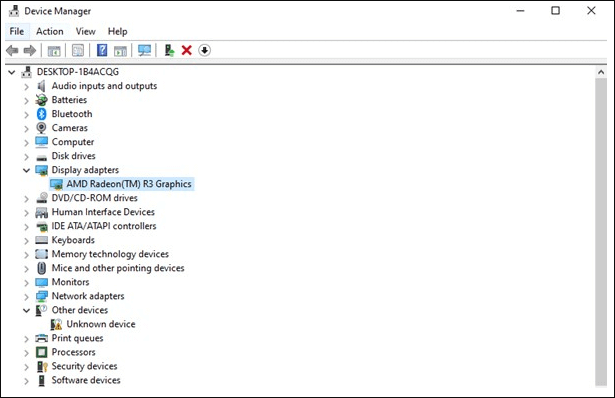
Step 2. Open Device Manager > expand "Universal Serial Bus controllers".
Step 3. Right-click USB Root Hub > Properties > Power Management > uncheck "Allow the computer to turn off this device to save power".
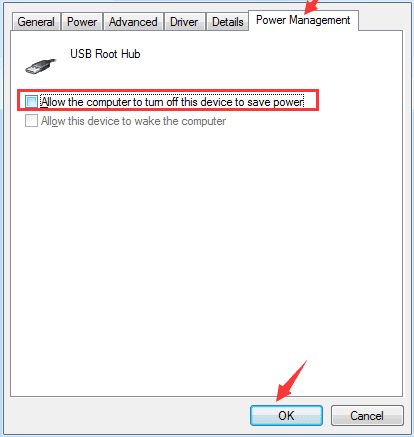
- Tip
- If your external hard drive is physically damaged, you'll need to take it to a maintenance center for repair.
After following the tips above, hopefully, your computer should be able to detect and recognize your external hard drive. If that's the case, you can try to open the drive and access the data.
If that's not possible, don't worry. Move to Part 2 and we'll show you how to use the hard disk data recovery software to restore all your precious data.
Part 2. Recover Data Before Fixing a Non-Working Drive
After making the external hard drive detectable, we suggest that you recover any data stored on it immediately. This will not only ensure you have a copy of the files but also avoid the possibility of losing anything stored on the disk while trying the fix the problem. Here's how to salvage your files.
3 Steps to Recover Data from External Hard Drive
To recover data from a problematic drive you'll require dedicated software. Deep Data Recovery is the perfect tool for the job as it's fast, reliable, and easy to use.
See how to restore data from the external hard drive on your own:
Step 1. Use a correct USB cable to connect your external hard drive to your computer. Run Deep Data Recovery and select file types and click "Next" to start.

Step 2. You will see your external disk under External drives. This software supports all the popular external disk brands, including WD, Seagate, Toshiba, LaCie, SanDisk, Samsung, etc.
Select the external hard drive and then click the "Scan" button.
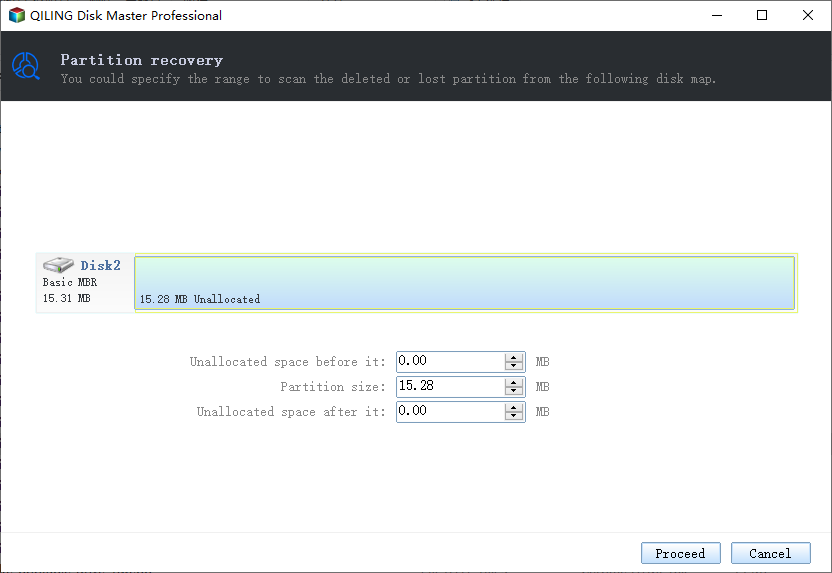
Step 3. As soon as the scan process starts, the software will find more and more lost and deleted data and display the data in the scan results. The recovered data will be nicely organized. You can quickly find the target files/folders by file type or search in the search box with exact file name.
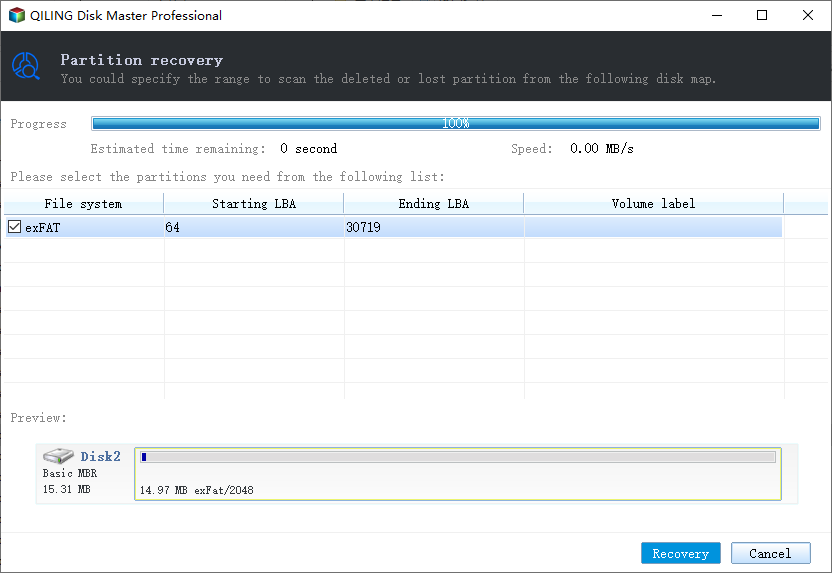
Step 4. You can preview the files found by Deep Data Recovery's scanning algorithms. Then, select files and click "Recover". To avoid data overwriting, we recommend that you save the recovered data to a different drive than the original Seagate drive.
Don't save the recovered data on your external hard drive before fixing and making it work normally again.
Part 3. How to Fix "External Hard Drive Is Not Working/Responding" Error
Now we'll look at how to repair the non-working or undetectable drive
To get a better idea of what needs fixing, open Disk Management in Windows and check the state of the drive.
- #1. Check and Fix Disk Errors on External Hard Drive - Disk Contains Corrupted File System Error
- #2. Format External Hard Drive to NTFS - Disk Shows RAW or Unsupported File System
- #3. Create A New Partition in External Hard Drive - Disk Displays as Unallocated
- #4. Assign a New Drive Letter to External Disk - Disk Shows as "New Volume" with No Drive Letter
- #5. Initialize External Disk and Create a New Volume - Disk Is Unknown, Not Initialized
- #6. Update Disk Driver
- #7. Update Universal Bus Controllers
- #8. Run Antivirus Software
- #9. Turn to External Hard Drive Manufacturer or Repair Center for Help
Methods 1-7 can fix most problems with non-working drives, but should that not be the case you can turn to methods 8 and 9 for help. Let's go through each method step by step.
Method 1. Check and Fix Disk Errors on External Hard Drive
Applies to: Fix external hard drive that's not working due to unknown disk error or corrupted file system.
Mostly, when an internal or external hard drive contains an unknown error or a corrupted file system, the Windows PC will be unable to detect or open the drive.
Here are two options you can try to fix these problems.
Option 1. Run Partition Manager Freeware to Fix External Hard Drive Not Responding Error
Download and install Qiling Partition Master Free on your PC.
Step 1. Right-click the target partition that has a problem.
Step 2. Choose "Advanced" > "Check File System".
Step 3. In the Check File System window, check the "Fix the error on the disk" option.
Step 4. Click "Proceed" to check errors on your partition.
Option 2. Run CMD to Manually Fix External Hard Drive Errors
- Warning
- Running chkdsk can hopefully fix the external hard drive errors, however, it can also result in total data loss. So, perform data recovery in advance, and then continue with the CMD method.
Step 1. Type cmd in the Search box, right-click to open Command Prompt.
Step 2. Right-click "Command Prompt" and choose "Run as administrator".
Step 3. Type chkdsk /f /r /x g: and hit Enter to begin the checking process.
Note: Replace g with the drive letter of your external hard drive.
Step 4. When it's finished, type: exit and hit Enter to finish the process.
Your disk should now be detectable to Windows. If it still doesn't work, there's another option you can try.
Option 3. Run CMD Alternative to Fix External Disk File System Error
The Command line is a powerful way to fix problems on Windows, but it can also cause severe problems if you enter code incorrectly. Therefore, we strongly recommend you try Qiling Clean Genius instead.
It's a practical and safe way to repair file system or disk error, as we'll demonstrate below:
Download Qiling CleanGenius and install it on your computer. Let's start checking and refixing file system error on your device now.
Step 1. Click "File Showing" to enter the next step.
Step 2. Choose the target device and tick the box of "Check and fix file system error". Click "Execute" to start fixing the problematic device.
Step 3. When the fixing process completes, click "here" to open and use your device.
Method 2. Formatting an External Hard Drive to NTFS to Repair the Fault
Applies to: Fix external hard drive not working/detected/responding error due to RAW or unsupported file system.
If your external hard drive shows up as RAW or with an Unsupported File System in the Disk Management app in Windows, the best solution is to reformat the drive

Here's how to reformat a drive that's showing as RAW or with an Unsupported File System:
Step 1. In Run (Windows + R), type diskmgmt.msc and hit Enter.
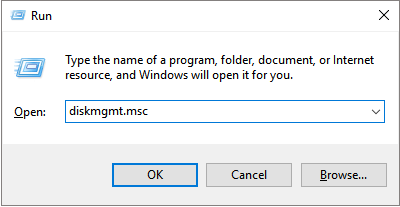
Step 2. Go to Disk Management, right-click the external hard drive, and select "Format".
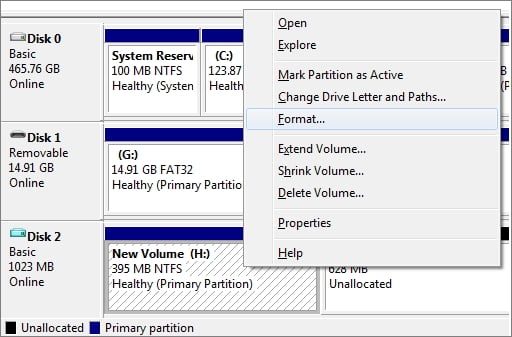
Step 3. Choose a file system like NTFS or exFAT and tick "Quick format". Click "OK" to start the formatting.
When this is done, your external drive should be safe to use once more
Method 3. Create A New Partition in External Hard Drive
Applies to: Fix disk displays as unallocated in Disk Management that makes external hard drive not working.
Mostly, when your external hard disk shows as unallocated, it means that there is no partition in the disk. As a result, the computer cannot recognize it. To fix this issue, you need to first recover data from the disk first (as shown in Part 2).
Then, you can follow the steps below to create a new partition, making the external hard drive working again:
Step 1. Connect the unallocated external hard drive to your PC and open Disk Management.
Step 2. Right-click on the unallocated space of the external hard drive, select "New Simple Volume".
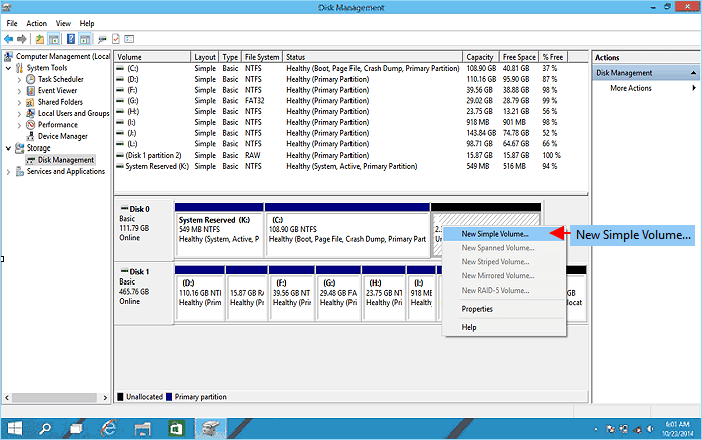
Step 3. Set partition size, drive letter and file system (NTFS), etc.
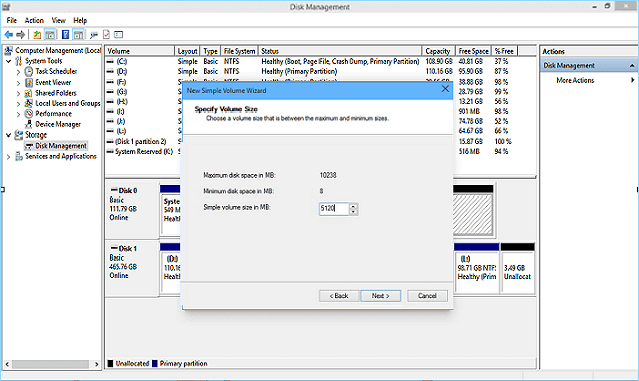
Step 4. Click "Finish" to complete the process.
Method 4. Assign a New Drive Letter to External Disk
Applies to: Fix disk shows as "New Volume" with no drive letter that causes external hard drive not responding.
Step 1. Go to Disk Management and right-click on your external hard drive.
Step 2. Go and select a new drive letter by clicking "Change", and click "OK" to confirm.
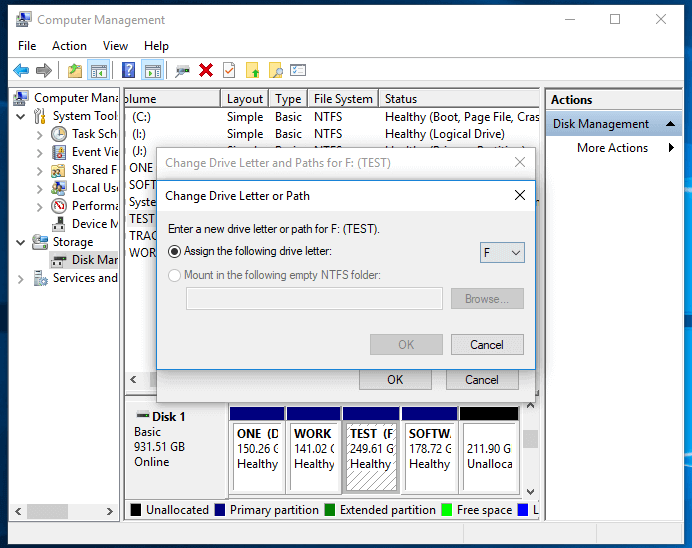
The non-responding drive should now be readable by Windows.
Method 5. Initialize External Disk and Create a New Volume
Applies to: Fix "Disk Is Unknown, Not Initialized" that causes the external hard disk to not work nor be detected
Step 1. Right-click "My Computer" > "Manage" to run Disk Management.
Step 2. Here, right-click the Unknow external hard drive and click "Initialize Disk".
Step 3. Select the disk(s) to initialize and choose MBR or GPT partition style, then, click "OK" to confirm.

Now the drive should be recognized as 'unallocated', so if you have data you need to recover, go back to Part 1 and use the Qiling data recovery software to retrieve your files.
Step 4. Finally, right-click on the unallocated space on your external hard drive and create a new volume on it.
Method 6. Update Disk Driver
Applies to: Get non-responding external hard drive to show up and work by updating disk drivers.
Step 1. Right-click "This PC" and choose "Manage".
Step 2. Click "Device Manager" then expand "Disk drives".
Step 3. Find and right-click the problematic external drive and select "Update driver".
Step 4. Click "automatically search for driver software online".
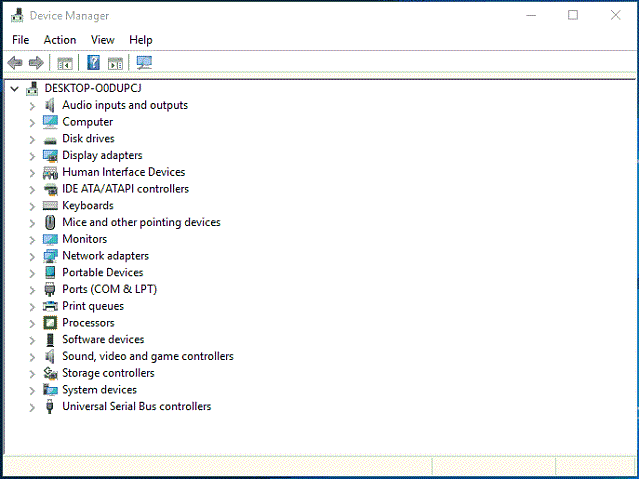
Method 7. Uninstall Universal Bus Controllers
Applies to: Fix external hard drive not working issue by updating Universal Serial Bus controllers driver.
Step 1. Open "Device Manager", find and expand Universal Serial Bus controllers
Step 2. Right-click on the USB controllers of your external drive and select "Uninstall device".
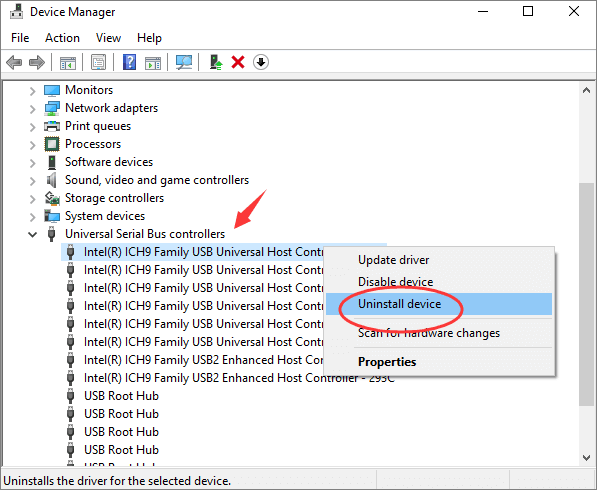
Step 3. Repeat to uninstall each USB controller one by one. Then restart the computer.
While rebooting the PC, Microsoft will automatically reinstall the USB controllers software for your not working external hard drive.
Method 8. Run Antivirus Software
Applies to: Fix virus or malware that causes your external hard drive not working.
Sometimes, the problem causing your drive to malfunction can be a virus or malware on your system. If you've tried the methods outlined above without success, another option is antivirus software. Here's how to use it:
Step 1. Install and run antivirus software on your computer.
Step 2. Scan and unlock the external hard drive.
Step 3. Wait for the cleaning process to complete, then, restart the PC.
After this, reconnect your external hard drive to the computer and check if you can use it again.
Method 9. Turn to External Hard Drive Manufacturer or Repair Center for Help
If all else fails, the last option is to contact either the manufacturer of the hard drive or a local disk repair center for help. If the physical disk is damaged in some way or the firmware is outdated, then they may be able to help.
If you're only interested in saving the data on the drive, then either may be able to assist you, plus you can contact Qiling Data Recovery service to talk to one of our technicians.
Consult with Qiling Data Recovery Experts for one-on-one manual recovery service. We could offer the following services after FREE diagnosis
- Repair corrupted RAID structure, unbootbale Windows OS and corrupted virtual disk file (.vmdk, .vhd, .vhdx, etc.).
- Recover/repair lost partition and re-paritioned drive.
- Unformat hard drive and repair raw drive(Bitlocker encrypted drive)
- Fix disks that become GPT protected partitions
To Sum Up
On this page, we explained the causes of external hard drives not working, not responding, and not detecting errors. To make things easy for you, we divided the whole process into 3 parts:
Part 1. Make external hard drive detectable; Part 2. Recover data from the external hard drive; Part 3. Fix not working external hard drive with respective solutions.
The methods offered in this article can also be applied to repair and fix SD cards, memory cards, USB drives, flash drives, or hard drive partitions displaying similar issues.
It's recommended that you regularly create extra backups of your files to another secure location, with cloud storage services being an excellent and affordable option. But, if disaster should befall your drive, always remember that Deep Data Recovery is on hand to help.
Related Articles
- How to Fix Inaccessible Boot Device (Stop Code 0x0000007b)
- [5 Ways] How to Remove Write Protection from USB in Windows
- How to Fix Pen Drive Shows Empty Although It Has Data - 4 Solutions
- USB Unreadable: Recover Files from Unreadable USB Flash Drive